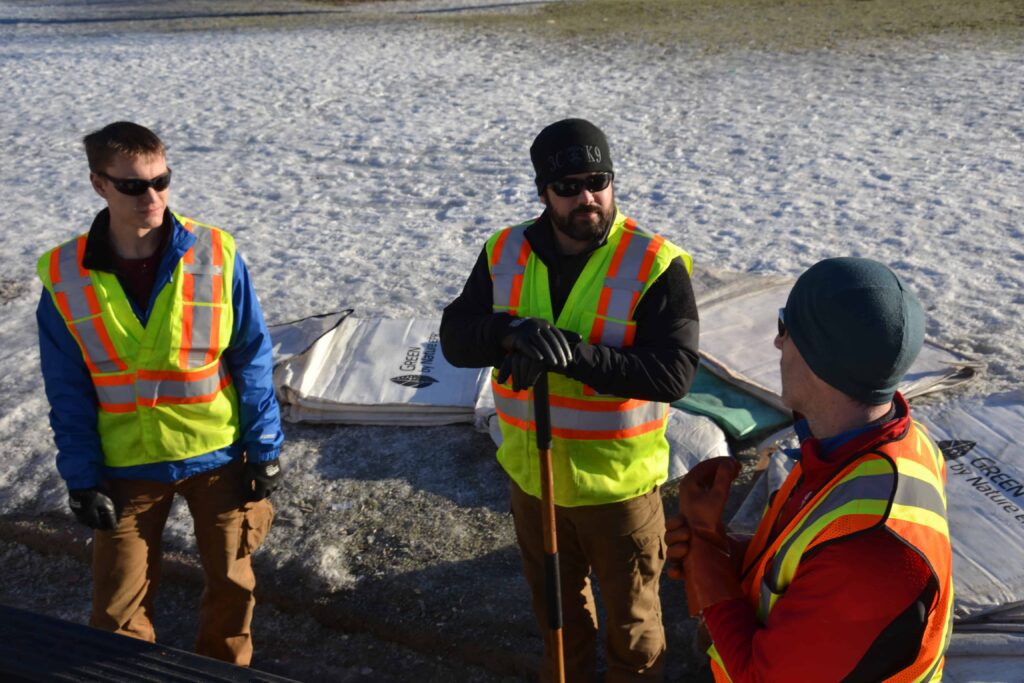The Multi-Material BC (MMBC) Packaging and Printed Paper Stewardship Plan outlines how MMBC operates within the pollution prevention hierarchy. The pollution prevention hierarchy is a series of steps to manage waste, in order of the preferred approach. It’s often simplified to “reduce, reuse, recycle”, but there are some additional steps.
The first step of the hierarchy focuses on reducing the environmental impact of producing the product and making choices about the components, energy, and resources used to produce it. That means thinking about how a product is created, including what materials and resources are used in its manufacture and packaging.
How MMBC is involved: While this step is largely the responsibility of individual producers of packaging—and MMBC is not involved in producing packaging—the fees that stewards (the companies that are obligated under BC’s Recycling Regulation because they produce or supply packaging and printed paper to BC residents) pay are based on the amount and the kind of packaging they supply to BC residents, with higher fees for difficult-to-recycle or currently unrecyclable materials, and lower fees for easily recyclable materials. Stewards using less packaging and easier-to-recycle packaging pay lower fees.
The next step focuses on redesigning the product to improve reusability or recyclability. This is another step that is largely the responsibility of packaging producers. Examples include reducing the size of the label on packaging so that sorting machinery can more easily identify the type of plastic used to make the bottle.
How MMBC is involved: MMBC’s fees reward stewards that redesign packaging and printed paper to be smaller and lighter. MMBC also provides feedback to stewards and, over time, will provide guidance to stewards on designing for recyclability.
The next step does not apply to stewards in MMBC’s packaging and printed paper recycling program, as it relates to unused portions of a product that is consumable, and neither packaging nor printed paper are consumable.
Next, the emphasis is on reusing the product. Again, stewards are primarily responsible for this. An example—though the packaging is outside MMBC’s program—is glass beer bottles, which can be refilled.
How MMBC is involved: As with the redesigning step, MMBC’s fees reward stewards for reuse as fees would be paid only once while the package is reused many times.
MMBC is directly involved in the remaining stages. For the stage that focuses on recycling the product, stewards’ fees pay for the collection and recycling of packaging and printed paper in BC.
Below is an excerpt from MMBC’s approved packaging and printed paper stewardship plan showing MMBC’s role in the pollution prevention hierarchy:
| Pollution Prevention Hierarchy | Activity |
|---|---|
| Reduce the environmental impact of producing the product by eliminating toxic components and increasing energy and resource efficiency | Initiatives undertaken by individual producers
PPP Stewardship Plan encourages reduction through cost allocation which rewards companies which reduce the weight of PPP sold into the market |
| Redesign the product to improve reusability or recyclability | Initiatives undertaken by individual producers
PPP Stewardship Plan encourages redesign through cost allocation MMBC will provide guidance to producers on design for recyclability |
| Eliminate or reduce the generation of unused portions of a product that is consumable | Not applicable as packaging and printed paper are not consumable |
| Reuse the product | Initiatives undertaken by individual producers
PPP Stewardship Plan encourages reuse through cost allocation |
| Recycle the product | PPP Stewardship Plan utilizes payments to service providers to encourage collection of PPP and processing of PPP to meet recycling end-market requirements
MMBC will provide guidance to producers on design for recyclability |
| Recover material or energy from the product | Primary and downstream processors are encouraged through performance standards to further process system residues to meet recovery end-market requirements and minimize the amount of residue sent to landfill |
| Otherwise dispose of the waste from the product in compliance with the Act | Primary and downstream processors are required to manage residue in compliance with the Act |




